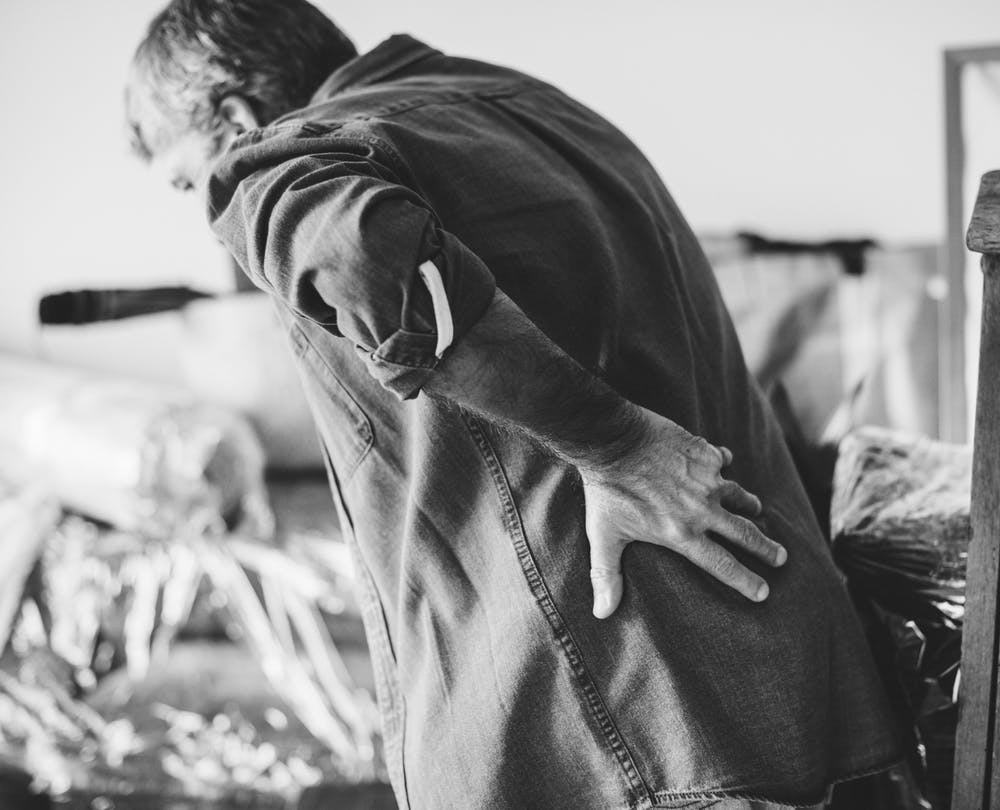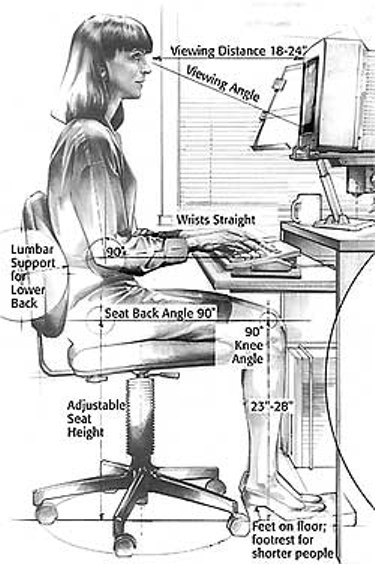|
BOOK NOW |
ASK ABOUT YOUR PAIN |
Home > Blog > Physiotherapy > Conditions > Repetitive Strain Injury Physiotherapy
Repetitive Strain Injury Physiotherapy

Repetitive Strain Injury, often abbreviated as RSI, is called by other names such as cumulative trauma disorders (CTD), overuse syndrome or repetitive stress injury, is really injuries to the physical and neurological body or body parts by repetitive actions, tasks, or by repeated exposure to forces that are compressive or vibration in nature.
Common causes of Repetitive Strain Injury
Literature describes the causes of RSI to be primarily be lifestyle or worklife without ergonomic concerns or care, e.g.
- using a poorly handled knife, or blunt knife, everyday, over time causes RSI
- or simply by placing the monitor too much to the right, or to the bottom, causes our necks to stiffen and muscles to shorten in a particular fashion, inducing repetitive strain injury, over time.
A list of typical actions or habits that lead to Repetitive Strain Injury
- Reading or doing tasks for extended periods of time while looking down e.g. phones, tablets, books (an example is the famous "forward neck syndrome") etc.
- Sleeping on an inadequate bed/mattress or sitting in a bad armchair and/or in an uncomfortable position.
- Carrying heavy loads.
- Clamping phone between neck and shoulder for a phone conversation
- Watching TV in a prolonged position.
- Sleeping with head to the side, or forwards.
- Prolonged use of the hands, wrists, back, neck on a specific task.
- And much, much more
Symptoms of repetitive strain injury
- Short bursts of severe cramping and/or excruciating pain over a widespread area of the body
- Pain worsens with activities or exercises (which is typical of RSI conditions such as carpal tunnel syndrome, cubital tunnel syndrome, tennis elbow, golfer's elbow, back pain, neck pain etc)
- Noticeably weakness in limbs
Frequency And Occurrence
Shockingly, about 55-70% of workers in US and UK suffer from some kind of repetitive strain injury and the most common RSI problems are the
- back and neck (spinal pains)
- wrists (wrist sprains) and
- the hands (hand pains and injuries)
Physiotherapy Examinations And Tests

Initial examinations includes primarily clinical palpations, and if any tenderness or weakness are detected on mobility-related tests e.g. pinch or pinch strength weaknesses, with no other obvious signs of abnormalities.
The patient will present with a healthy body or body part that has pain.
Physiotherapy and hand therapy Treatment
From what we know theoretically and clinically experienced in ourselves and in our patients, most of the time, most of the RSI that is sustained will resolve on their own, given that the affected area is sufficiently rested when the RSI started.
I myself have intermittent trigger finger and de Quervain's tenosynovitis, which, with rest, splinting, and gentle active and passive exercises and stretches, will accelerate its healing.
But, on the other hand, it can escalate in pain experienced in terms of intensity, frequency and duration painful moments, and I've managed patients who had their repetitive strain injury for years, some chose to live with it and come to me periodically for pain relief and mobility exercises, some opt for surgical interventions.
The most commonly prescribed physiotherapy intervention for repetitive strain injury in our clinics are a clinical mix of
- cold therapy
- heat therapy
- moist heat paraffin wax therapy
- manual therapy
- joint mobilization
- ultrasound therapy
- stretching exercises
- strengthening exercises
- scar management
- etc
Sometimes we also provide ultrasound to speed up the healing process.
Ergonomics And Workstation Consultancy
The computer and workstation is often blamed for the development and aggravation of repetitive strain injury in workers, especially for the back and neck, hands and wrist ones, so it makes sense for us to assess and provide ergonomic and environmental modifications and adjustments of the workstation or work site are often required.
For this, we modify the layout of the worker in relation to his or her working environment, and whenever possible, the equipment and job processes.
Alternatives to help
- Adaptive RSI prevention software such as speech-to-text, break timers and auto-mouse-click.
- Adaptive hardware such as ergonomical keyboards, tablets, touch screens, roller mouse
- Splinting to provide the rest the body part requires.
- Physiotherapy or hand therapy for pain relief, exercise therapy
- Office exercises to keep active and fit
- Activity modification to minimize damage caused as opposed to non-work at all
- Stress Management relaxation techniques